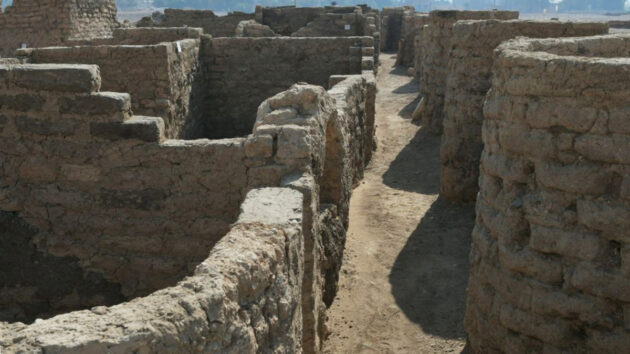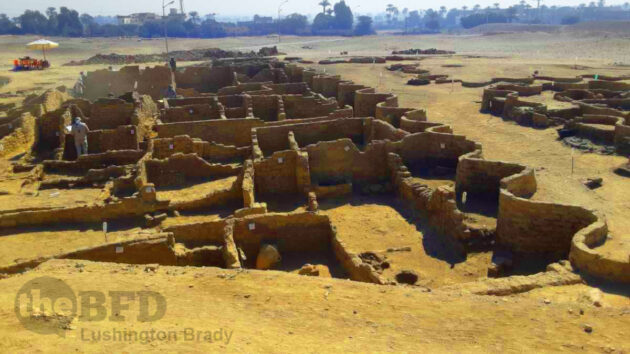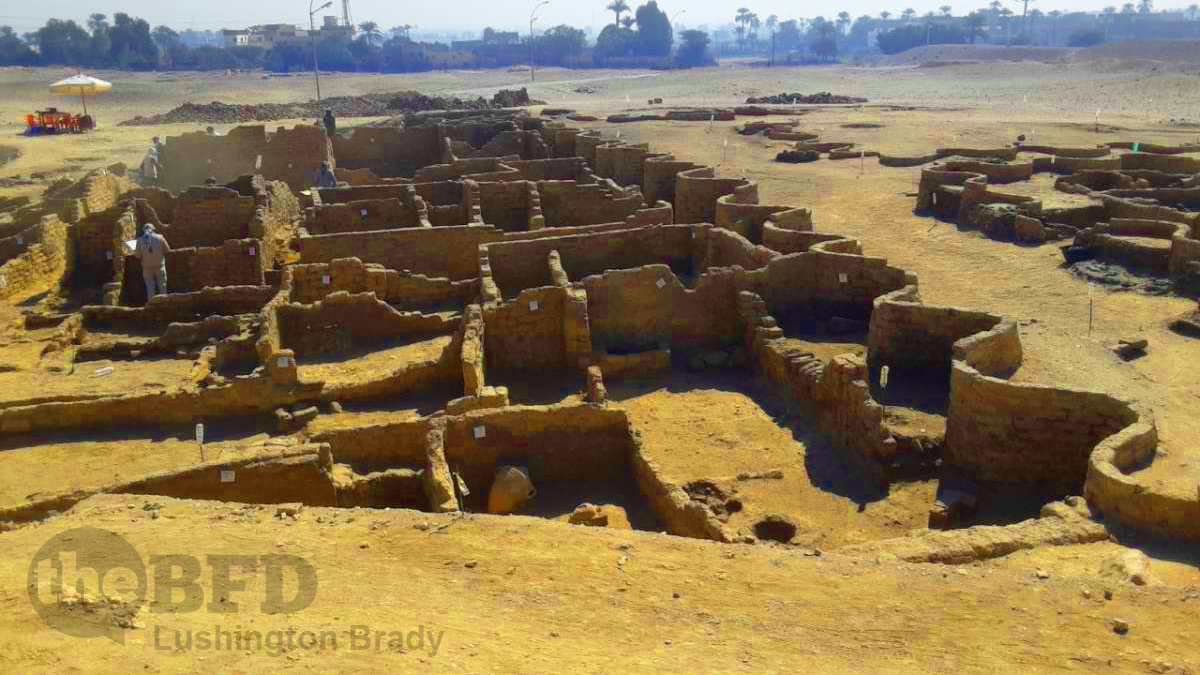“Lost cities” are an enduring trope of popular culture. The very name conjures visions of Lara Croft, Nathan Drake or Indiana Jones discovering vast ruins beneath the vines of steaming jungles.
But lost cities are occasionally very real. Indiana Jones is in fact based on Hiram Bingham, who, while his name was much less cool, was every bit the archaeologist adventurer as in the movies. Bingham revealed to the world the “lost city of the Incas”, Macchu Pichu, as well as the lesser-known Vilcabamba and Vitcos.
While archaeologists these days rarely operate with the same romantic panache as Bingham, they’re still rediscovering lost cities.
A recent discovery in Egypt has been dubbed the “lost golden city of Luxor”.
Luxor today contains the ruins of the ancient Egyptian city of Thebes (or Waset). Three and a half thousand years ago, Thebes was the capital of the Egyptian New Kingdom.
Until a heretic king abandoned it.
Akhenaten, who ruled from around 1353–1336 […] upended Egyptian culture, abandoning all of the traditional Egyptian pantheon but one, the sun god Aten. He even changed his name from Amenhotep IV to Akhenaten, which means “devoted to Aten.”
The heretic pharaoh didn’t stop there. Akhenaten moved his royal seat from Thebes north to a completely new city he called Akhetaten (modern site name: Amarna) and oversaw an artistic revolution that briefly transformed Egyptian art from stiff and uniform to animated and detailed. But after his death, most traces of the ruler were obliterated. Starting with his son, the boy king Tutankhamun, Akhenaten’s capital, his art, his religion, and even his name was dismissed and systematically wiped from history. Only the rediscovery of Amarna in the 18th century revived the legacy of the renegade leader, which has fueled archaeological speculation for hundreds of years.
The newly-discovered “lost golden city of Luxor” was the royal metropolis of Akhenaten’s father, Amenhotep III, before his heretic son abandoned it.
Because the city was initially discovered just in September of last year, archaeologists have only scratched the surface of the sprawling site, and understanding where this discovery ranks in Egyptological importance is hard to say at this time. The level of preservation found so far, however, has impressed researchers.
“There’s no doubt about it; it really is a phenomenal find,” says Salima Ikram, an archaeologist who leads the American University in Cairo’s Egyptology unit. “It’s very much a snapshot in time—an Egyptian version of Pompeii.”
The site dates from the era of 18th-dynasty pharaoh Amenhotep III, who ruled between around 1386 and 1353 B.C. and presided over an era of extraordinary wealth, power and luxury.
Amenhotep III and Akhenaten co-ruled for about 17 years before the elder’s death.
Though the size of the city has yet to be determined, its date is clear thanks to hieroglyphics on a variety of items. A vessel containing two gallons of boiled meat was inscribed with the year 37—the time of Amenhotep III and Akhenaten’s speculated father-son reign.
Scarabs, bricks, vessels, and more bear Amenhotep III’s royal seal. The buildings also bear his soon-to-be heretic son’s name, says Betsy Bryan, a professor of Egyptian art and archaeology at Johns Hopkins University. Bryan, who was not involved in the dig, visited on a day when archaeologists found a small clay ceiling stamped with hieroglyphs that said ‘The aten is found living on truth.’ “That’s an epithet of Akhenaten,” Bryan notes. Despite references to the younger king, though, she says the city is part of his father’s palace complex to the north, which was named Nebmaatre or “the Dazzling Aten.”
Once Akhenaten came into power and changed course, he left his father’s city, and seemingly everything it contained, behind.
That loss is modern archaeology’s gain.

The abandonment of Thebes was maybe not as traumatic as that of Pompeii, but like the latter, the new discovery is an astonishing treasure trove of Ancient Egyptian life.
Zigzagging mudbrick walls up to nine feet high and piles of ancient artifacts from the era of Amenhotep III.
Structures are packed with everyday items, many of which relate to the artistic and industrial production that supported the pharaoh’s capital city. There are homes where workers might have lived, a bakery and kitchen, items related to metal and glass production, buildings that appear related to administration, and even a cemetery filled with rock-cut tombs[…]
“It’s extraordinarily beautiful,” says Ikram. She recalls walking through the preserved streets, surrounded by tall walls where, she says, she expected an ancient Egyptian to come around the corner at any moment. “I don’t think you can oversell it,” she says. “It is mind-blowing.”
On Akhenaten’s death, the old ways struck back with a vengeance. The traditional gods were restored and the heretic pharaoh erased from the official record. His new capital was demoted by his son Tutankhamun, who re-established the ancient capital of Memphis. But Tutanhhamun also re-occupied Thebes.
Ay, who later inherited the throne when he married Tut’s widow, seems to have used it, too. Four distinct settlement layers at the site show eras of use all the way into the Coptic Byzantine era of the third through seventh centuries A.D.
Then, it was left to the sands until its recent discovery.
National Geographic

Please share this article so that others can discover The BFD

